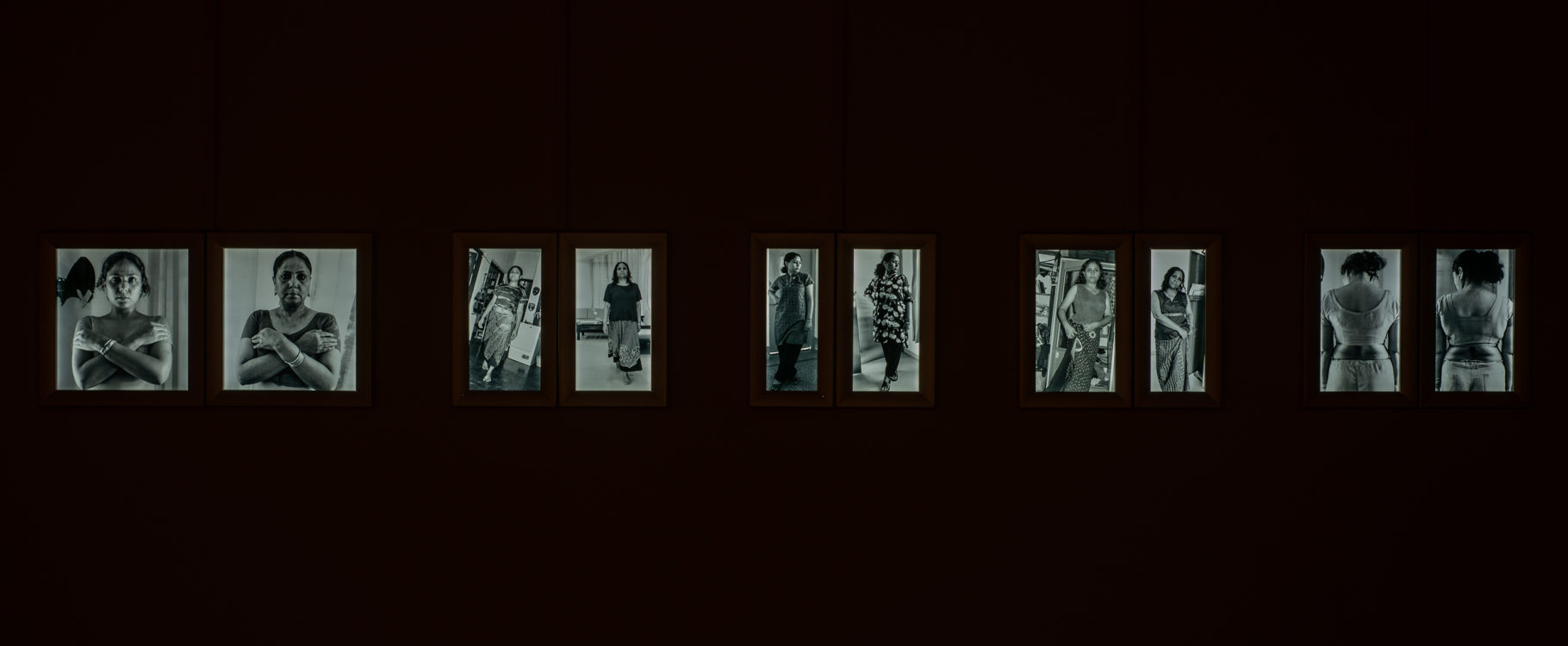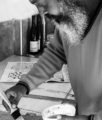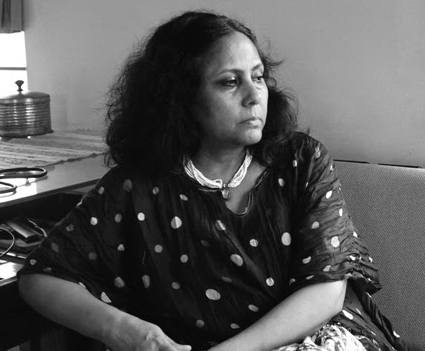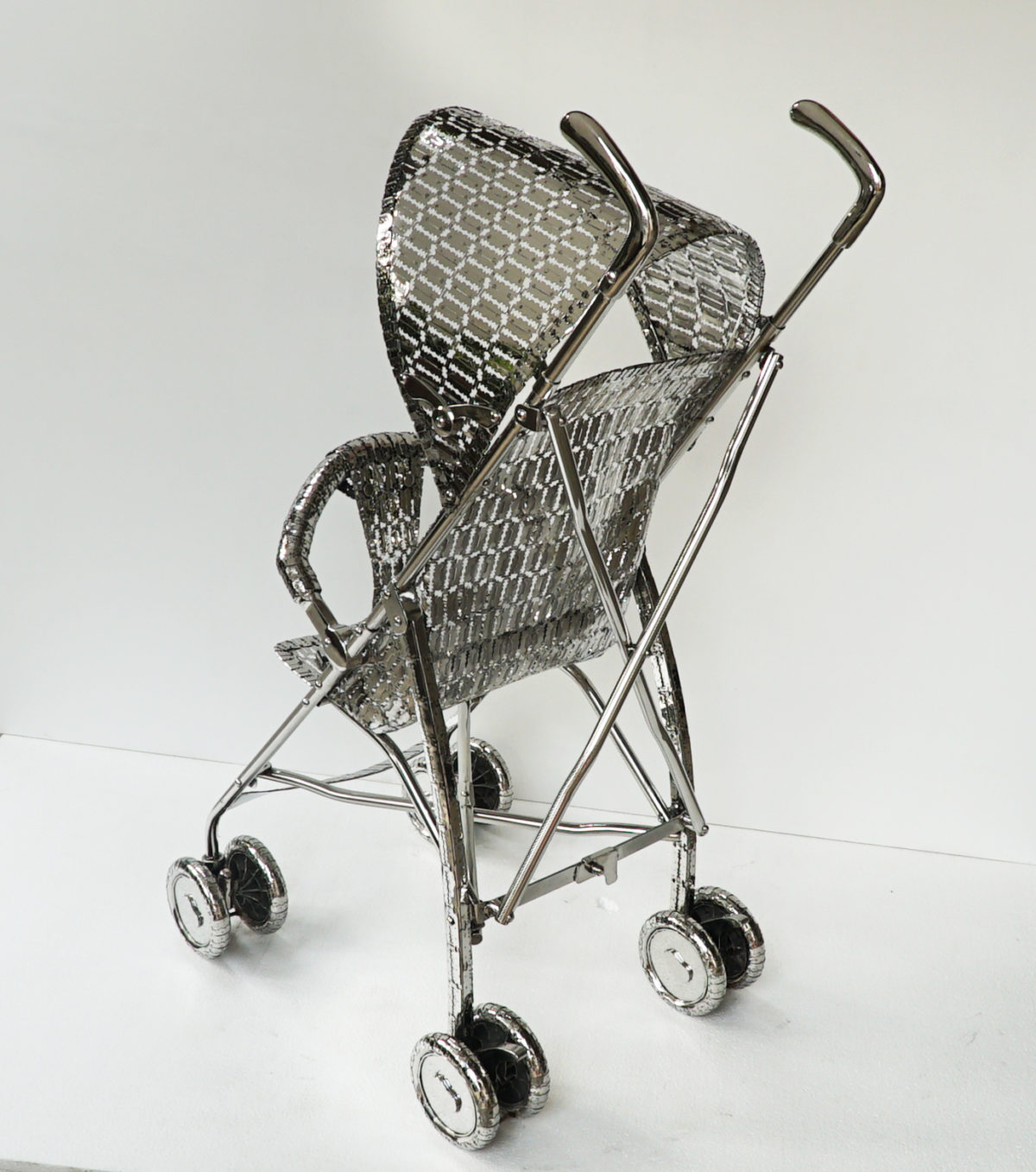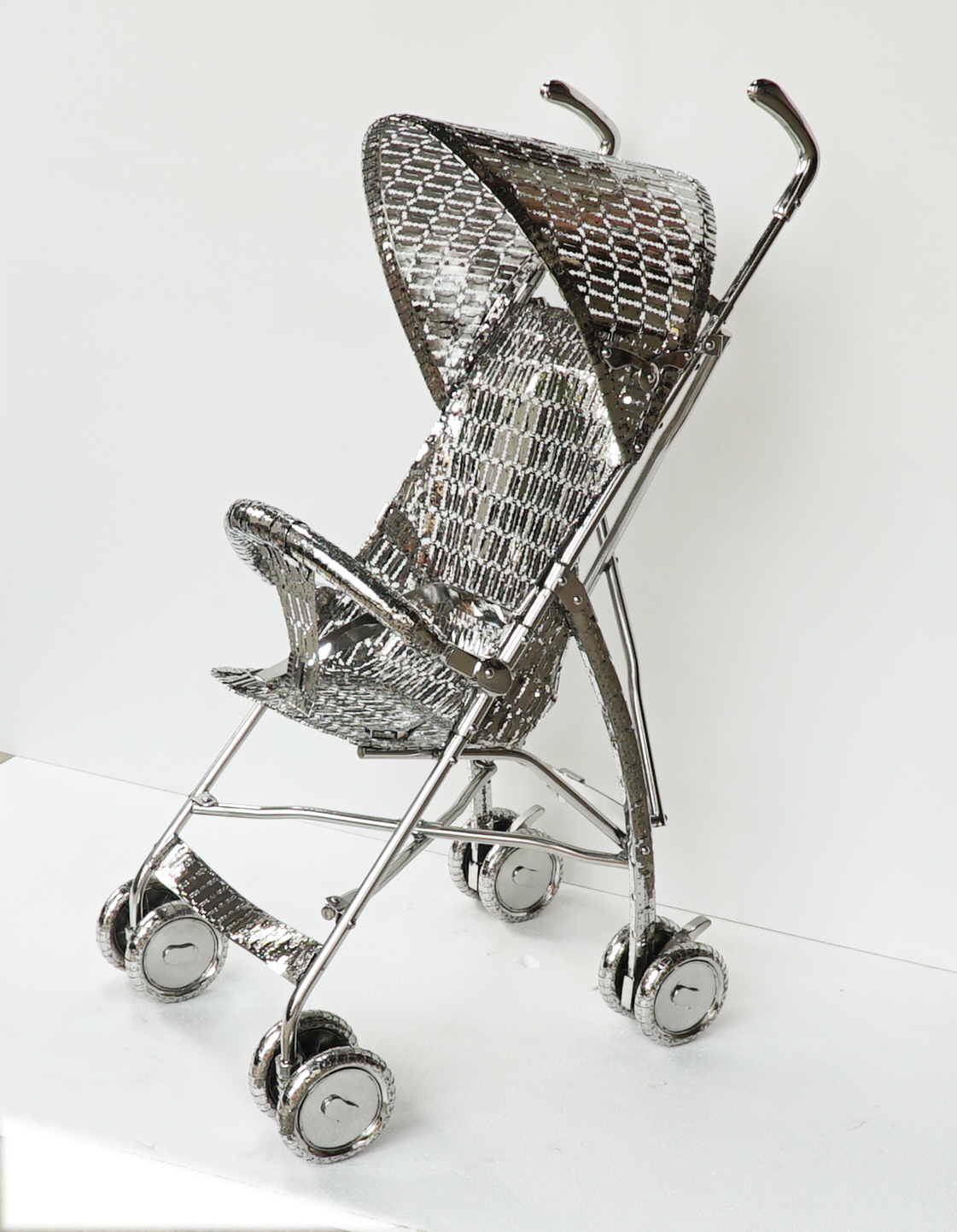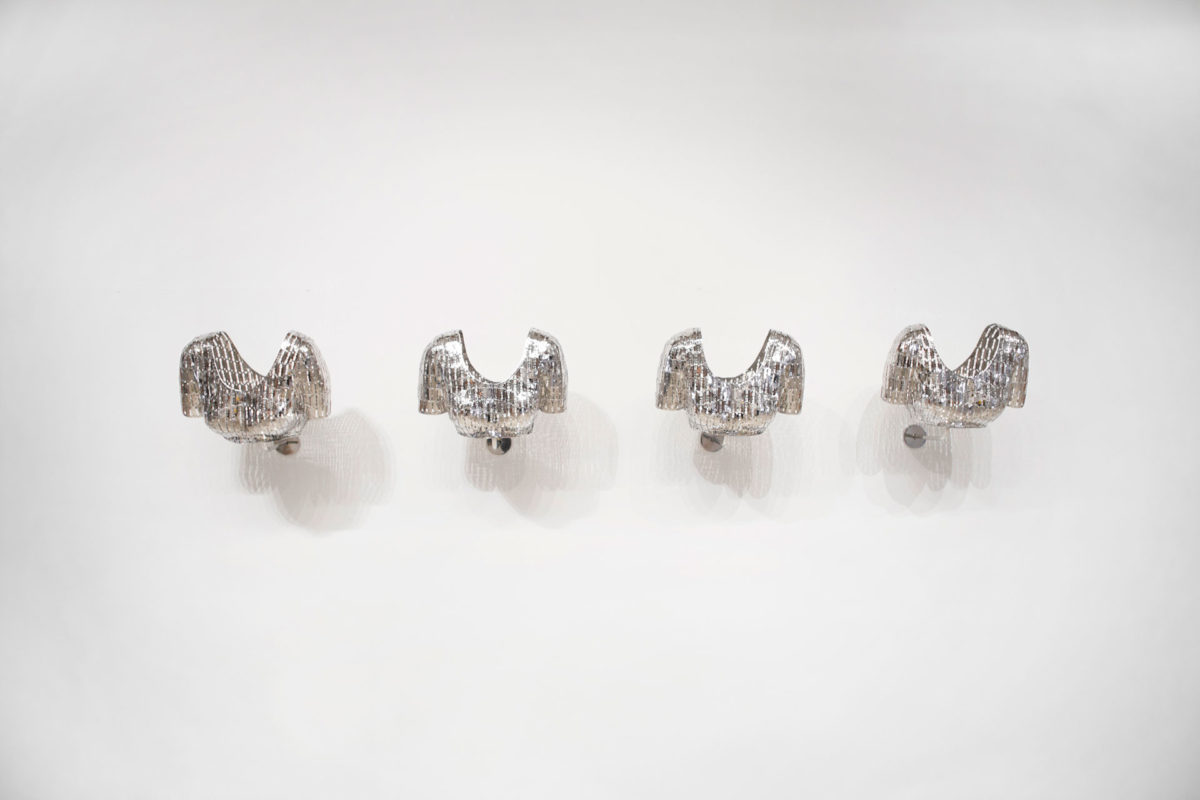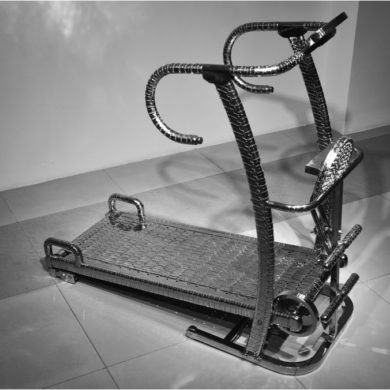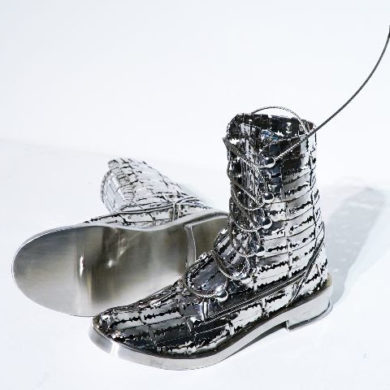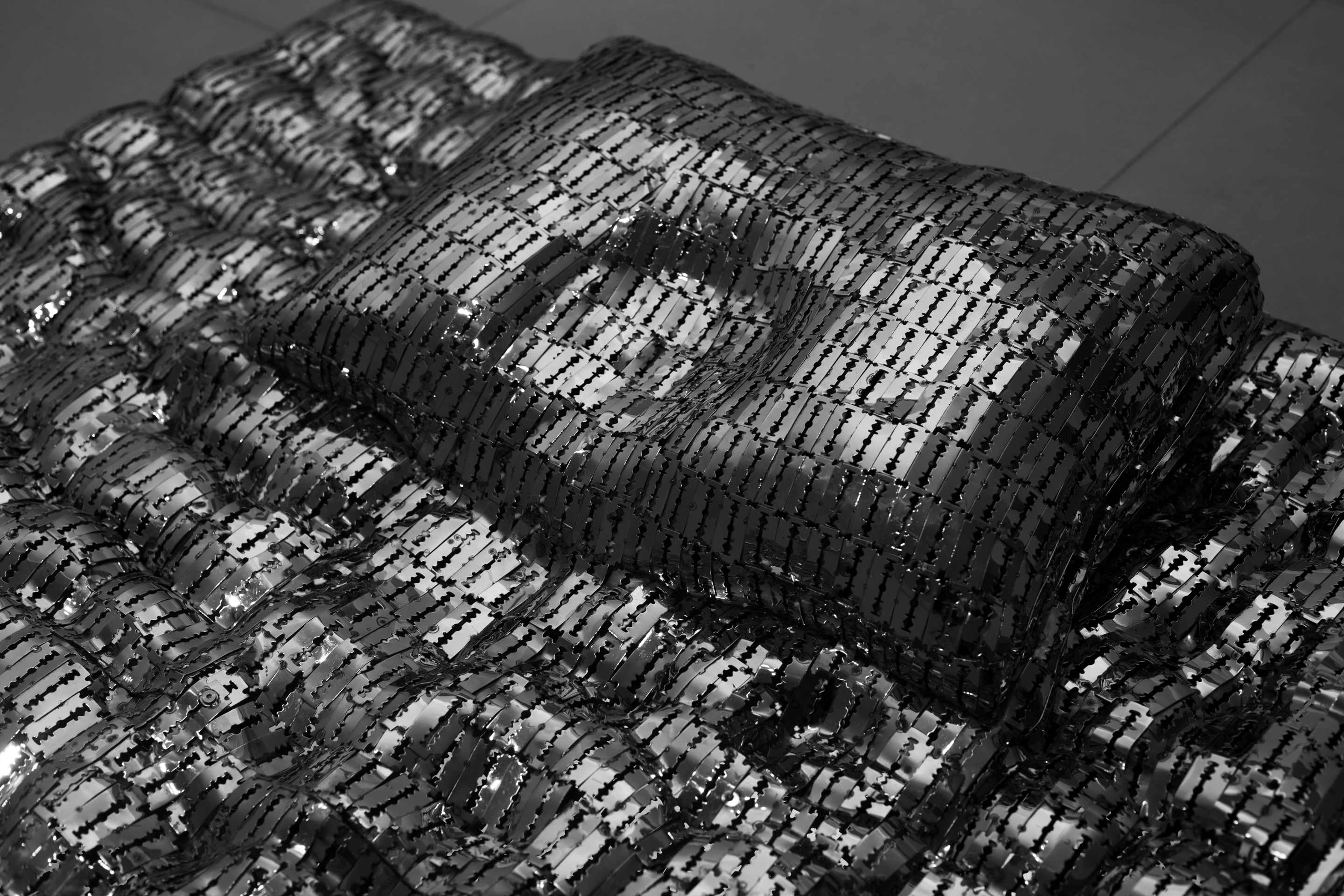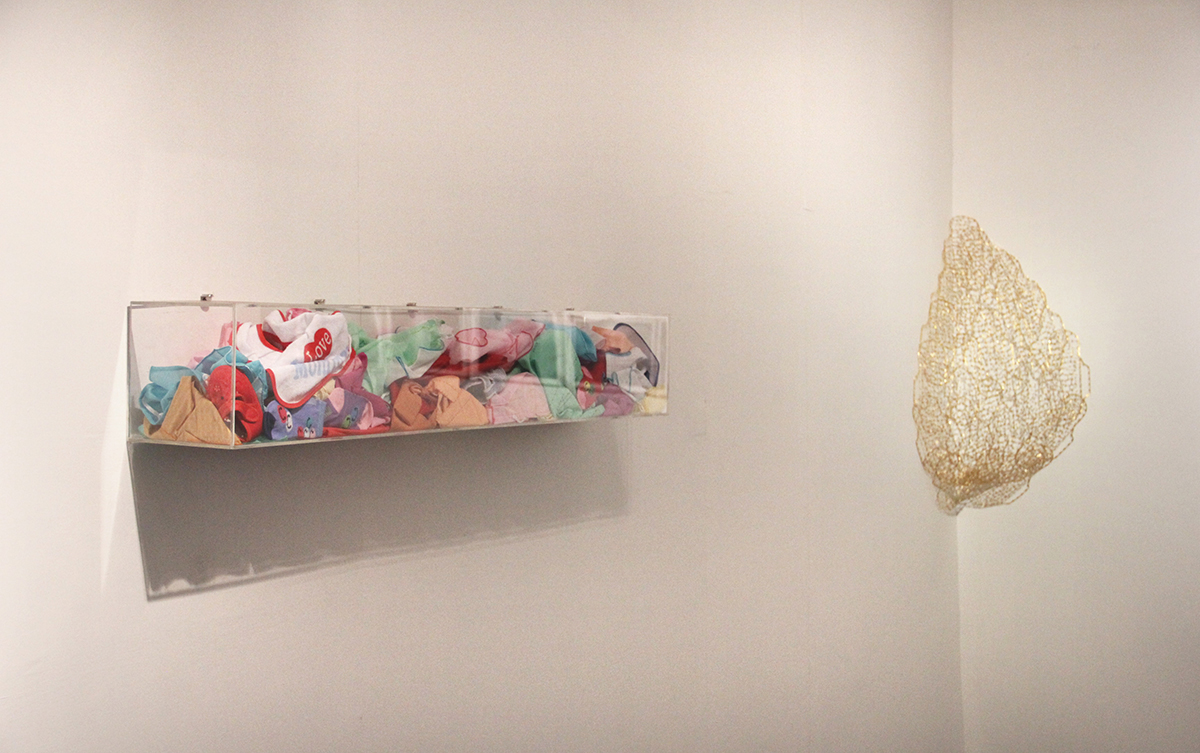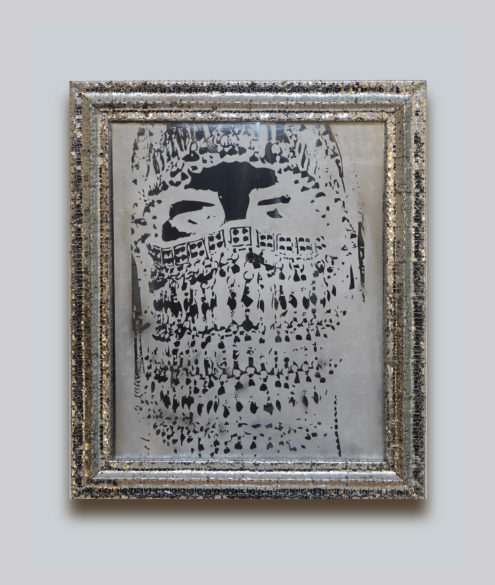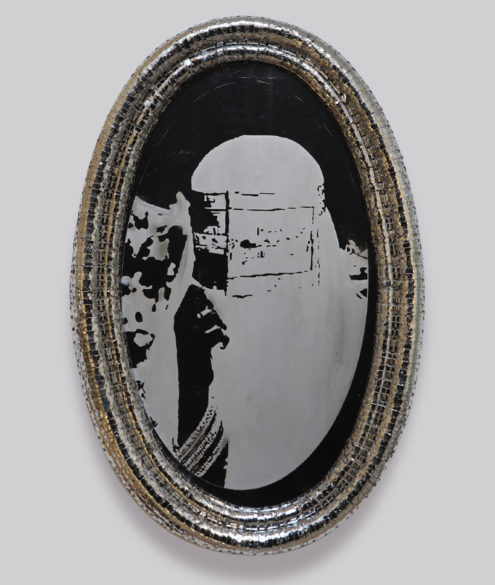Tayeba, The Queen of Dissent
Tayeba Begum Lipi is stitching during the COVID-19 crisis. It is something she has never done before. She is embroidering breath – oxygen; giving form to the anguish that plagues us.
The artist has also undertaken a collaborative art project titled ‘Tales Of The Soil’ with her partner, husband, fellow artist-par-excellence Mahbubur Rahman. This is part of a larger project under Zero Waste – Food art initiated by Britto Arts Trust. As part of their project, Tayeba and Mahbub are creating a kitchen garden at their home across the Buriganga river at Hasnabad, Bangladesh. The food they produce here will be used to feed their neighbourhood. This theme of giving, engaging and living with the community through their artistic journey has been key to the life of these two extraordinary artists. Together since college, they are made from the same clay and seem to have an elemental recognition of each other. But this piece is not about them, it is about her – Lipi (as she signs off in all of our correspondences), a name as succinct and beautifully loaded with meaning as her art. For Lipi (meaning script) like the essence of her name, is not just a medium, she is one of our fiercest mode of expression.


During our correspondences, she opens up about her life, and it feels like a rare privilege to be able to see the world as she does.
Tayeba Begum Lipi (Lipi) Speaks:
“At the beginning of the pandemic, we asked our fabricators to take leave and stay at home. In the empty studio, I was thinking about starting a new series of drawings. But afterwards, I changed my mind and thought about a completely different kind of work – stitching or embroidering. I used to make my own outfits and do a lot of embroidery throughout my life. Unfortunately, due to my busy schedule over the years, I could not spend much time making anything new. Since the lockdown gives the entire world a chance to slow down, I chose this (stitching) and wanted to start with the slowest process. I have produced at least 6 works. I think its time to do things that (I) have not done before.”
Tayeba Begum Lipi was born in Gaibandha. Growing up, her pursuits were more literary and lyrical than visual. She was one of twelve children to Taslim Uddin Sarker and Saleha Khatun. Her parents moved around due to her father’s job in the Railways and being the second youngest she initially travelled with them. She returned to her hometown only in her 9th grade and stayed back for another 4 years surrounded by her eleven siblings. But like embers recollecting their earliest fire, Lipi gravitated towards art and found her path to her destiny.
Lipi: “Growing up visual art was not particularly in my practice; I loved to draw as all other kids used to do. But I was more into music and writing. Most of my siblings were cultural practitioners, and I grew up in an atmosphere of books and creativity. I was fond of reading books and was often seen on stage reciting poetry or singing. My music teacher used to teach me during the time.”
“After completing the 12 grade, I came to the capital to attend different admission tests. My fifth brother Tahmidul Islam insisted I consider Fine Arts and introduced me to the beautiful fine art campus at Dhaka University. And in 1986, I got my admission to the historical Institute of Fine Art.”
“My father retired in 1983, and I did not want to take support from anyone else in my family. I started looking for a part-time job at the beginning of my study and finally got a job in a small art school. I also did tutorship for art and music from time to time so that I could manage my own expenses until the end of my study. Life was not very easy those days.”
It is during the beginning of her college that she met Mahbub. Reading about them, one is reminded of how poets speak of fondling fires. They do so while referring to relationships and how some deep ties can burn, but one still embraces (fondles) them. And with time, that fire can scorch and burn you or ignite shared curiosities, conversations, and compassion. Lipi and Mahbub, like many artist-couples, have journeyed through the fire of places and time to forge that rare partnership.
Lipi: “I see Mahbub as my first real mentor (who helped me) grow up as an artist at the beginning of my artistic journey. We still share things and learn from each other every day. I met with Mahbubur Rahman in my class… Mahbub and I were already in a relationship by the time of our graduation. We got married in 1996 and started staying together under one roof and that made life much easier and stronger.”
“We made a choice to develop our own practice as well as to create a platform for experimentation. After rolling out several conversations/ discussions with unique, worldwide networks such as Triangle and KHOJ and others, we officially founded Britto Arts Trust, the first-ever non-profit artists run collective in 2002 in Dhaka.”
As her work evolved, it developed a kind of edgy feel that leaves an imprint in your mind. You look at it, understand it and admire its audacity. The art is looking at you and questioning you about gender, identity, status, origin. It is domestic, confrontational and disconcertingly diabolical making Lipi’s work essential to our times.
Lipi: “Somehow, my friends and family members usually rely on my opinion in many cases related to gender or identity issues. There is domestic violence in every corner. As a good listener of their stories from my surroundings, I am familiar with all these unwanted and sometimes unforeseen painful issues in our society. Perhaps this is why my works are influenced by those unspoken stories. As part of society, no one can ignore the real fact of discrimination.”
As she speaks of how the people in her community share their stories with her, I wonder if that process of sharing is more than just the act of sharing. With all of Lipi’s intense strength of expression, those stories are no longer one person’s – it becomes theirs, together. She offers them a sense of catharsis, a balm. And it is this profound form of love that artists like herself share with healers – the offering of an outlet that can soothe.

Lipi: “The life span of a human being is too short. When I was a child a year of 365 days used to appear so long to me. In contrary, while growing up, each year goes by so fast that one cannot even finish all the commitment in time. Time flies, we grow up, take responsibilities, build careers, get busy with hundreds of engagements and then realise the ultimate journey of the whole life gets stuck in a casket. And as you age and start losing your loved ones one after another; at some point of life you just regret that you have not done enough yet, there are so much to do in upcoming days. Life is absolutely a journey, not a destination.”
As my conversations with her continued. I remember wondering about this age of fear. Fear – the new guiding light that seems to show us our path. Her work lacks fear. Like the girl taking on the bull on Wallstreet, she stands. She uses her art to tackle xenophobia. And I learn that she does feel fear, but deals with it as an unavoidable circumstance of her art as she continues working on issues close to her heart.


Lipi:“Life goes on, but during the time you fight against the odds of the society, especially discrimination to humanity, you are scared of your outspoken voice against political crimes and social crunches, agonise over raising your voice and how that might bring harm to your life. The suffocation of both mental and physical conditions makes you feel displaced and mute.”
At one point during our correspondences, Bangladesh is facing the onslaught of rains. She has gone silent during that time, and connectivity becomes an issue. But slowly, she returns. I see rain-soaked videos of her window online. It is melancholic, a paean of all that life brings to us.
Lipi:“… all other small things become relevant to your life, you continuously crawl to your past and generate the flow of your own conversation with yourself only. Looking at the mirror, you feel like sleeping in a cocoon forever. The lost beauty of your body becomes vital to your life despite the reality of an unchanged mind.”

Lipi: “A 20 years old video of mine convinced me of doing ‘This is What I Look(ed) Like’ project. After 20 years, I wanted to capture myself with the same gesture, taking a shower and dressing up, looking at the mirror to put Kajol on eyes and lipstick on my lips. Presenting both the videos in VHS format and HD format and showing (the visuals) next to each other was the main focus of this project. A set of 10 photographs from past and present wearing similar dresses and posing with a similar gesture was such a task. The pictures were presented in small, backlit boxes next to the video work. This work was included in this exhibition- ‘This Is What I Look(ed) Like’ at Sundaram Tagore Gallery, Chelsea, NYC in May 2019.”
Everything connects and interweaves in her life. Just like her food project at home, she has begun a project in her hometown too, collaborating with her brother Maynul Islam Paul who is also an artist. They are using their agricultural land to cultivate crops that will finally be harvested and given to the village. They will harvest two crops cyclically, and the linear journey of cultivation in this land will be turned to art.
I believe she will capture the fluency of her land, opening up conversations on the hollowness we seem to carry within, and the call to being and nurturing something more during the cycles of crisis we are passing through. This manner of responding to issues sensitively sums her up as an artist – one who balances both the art and a cause unwaveringly.
Lipi: “As a human being and as part of society, I believe there must be some kind of opinions or reactions from all sorts of people as well as the artists. We all should take responsibility and deliver our thoughts in our own ways.”
As our conversation winded down, I felt the need to have her voice louder than my interpretation in the interview, and I hope that come through. Because when you look deeply into her work, you see the empathy with which she deals with loss and suffering. You respect her concerns regarding gender and identity; of those relegated to the shadows, and you want her to be heard, louder and louder by others.
